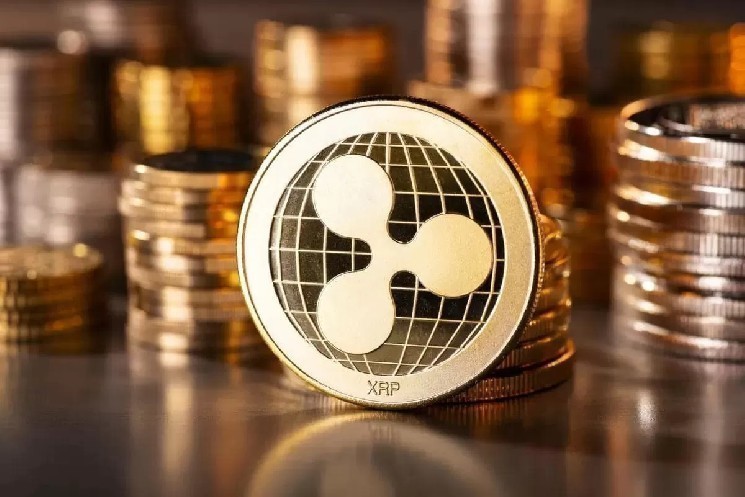XRP Ledger Shows Robust Growth and Enterprise Development in Q3, Report Reveals
XRP Outperforms Major Cryptocurrencies as Infrastructure Upgrades Position It for Corporate Adoption
In a comprehensive analysis of the XRP ecosystem’s performance, cryptocurrency research firm Messari has unveiled striking growth metrics and technological advancements that could reshape the digital asset’s future. According to Messari’s Q3 State of the XRP Ledger report, the XRP ecosystem not only delivered impressive financial returns but also implemented crucial infrastructure improvements tailored for enterprise-level applications.
The report highlights XRP’s exceptional market performance, closing the third quarter at $2.85—a 27.2% increase that propelled the cryptocurrency to a new all-time high. This growth pushed XRP’s market capitalization to $170.3 billion, significantly outpacing major cryptocurrencies like Bitcoin (BTC), Ethereum (ETH), and Solana (SOL), which collectively grew by just 13.3% during the same period. This performance differential underscores XRP’s strengthening position within the broader cryptocurrency market, particularly as it continues to recover and expand following years of regulatory uncertainty.
Enterprise-Grade Infrastructure Development Positions XRPL for Corporate Finance Revolution
Behind XRP’s impressive price performance lies a more profound narrative of technological evolution. Messari’s analysis reveals that the XRP Ledger (XRPL) has now developed enterprise-grade infrastructure capabilities that address critical requirements for institutional adoption. These advancements include sophisticated identity verification systems, enhanced financial compliance mechanisms, and privacy features that make the platform increasingly attractive to corporate users.
“The XRPL now offers a comprehensive suite of tools designed specifically for enterprise implementation,” notes the report, highlighting three key technological advancements. First, the platform now supports multi-purpose tokens (MPTs) that can store parameters of tokenized real-world assets (RWAs), creating new possibilities for asset representation. Second, the integration of Zero-Knowledge Proofs (ZKP) provides essential privacy protections for sensitive financial transactions. Finally, the implementation of KYC/AML-verified access credentials establishes regulatory compliance frameworks that businesses require. These features collectively position the XRP Ledger at the intersection of corporate finance, decentralized finance (DeFi), and asset tokenization—three rapidly expanding sectors within the digital economy.
Tokenized Real-World Assets Drive Explosive Growth on XRP Ledger
The real-world asset tokenization market has emerged as a particular bright spot within the XRPL ecosystem. Messari’s report documents a remarkable 215% increase in RWA market capitalization on the XRP Ledger during Q3, reaching $364.2 million. This explosive growth reflects the platform’s increasing adoption by innovative financial projects seeking blockchain-based solutions for traditional assets.
Several high-profile projects have contributed to this impressive growth trajectory. Ondo Finance’s OUSG treasury fund, Guggenheim’s digital commercial paper initiative, and tokenized real estate issued by Ctrl Alt have all selected the XRP Ledger as their technology foundation. Additionally, Ripple’s dollar-pegged stablecoin, RLUSD, has emerged as a significant player, with its market capitalization growing 34.7% quarter-over-quarter to $88.8 million. This growth has established RLUSD as the largest stablecoin on the XRP Ledger, providing essential liquidity and stability to the ecosystem. The accelerating adoption of RWA projects suggests growing confidence in XRPL’s technical architecture and regulatory positioning.
Deflationary Mechanics and Distribution Model Support Long-Term Value Proposition
The XRP Ledger employs a unique economic model that contributes to its value proposition. Unlike many blockchain networks where transaction fees are distributed to validators, XRPL burns these fees directly, permanently removing them from circulation. This deflationary mechanism has resulted in 14.2 million XRP (approximately $40.5 million) being permanently removed from the supply since the network’s inception, creating natural upward pressure on the asset’s value.
Simultaneously, Ripple continues its structured distribution approach, releasing 1 billion XRP monthly from escrow accounts, with unused tokens being locked back into escrow. This methodical system will gradually release the remaining 35 billion XRP into circulation, providing predictability to market participants. “This balanced approach to token economics—combining deflationary fee burning with methodical distribution—provides both stability and scarcity to the XRP ecosystem,” explains Messari’s analysis. The transparency of this distribution model stands in contrast to some cryptocurrency projects where tokenomics remain opaque or subject to sudden changes.
Network Activity Accelerates as XRP Ledger Evolves Beyond Simple Value Transfer
The report also documents significant growth in network activity, reflecting broader adoption and expanded use cases. Average daily transaction count on the XRP Ledger increased by 8.9% to 1.8 million in Q3, while daily active addresses rose 15.4% to 25,300. Perhaps most impressively, new address creation surged 46.3% to 447,200, bringing the total address count to 6.9 million.
Messari analysts note that XRPL address statistics likely represent more accurate user counts compared to other networks, as the platform’s 1 XRP deposit requirement to open an account effectively prevents spam account creation—a common problem that distorts metrics on many blockchain platforms. Transaction analysis reveals that Payment (value transfer) and OfferCreate (limit order creation) functions dominate network activity. The prevalence of OfferCreate transactions is particularly noteworthy as it supports transaction flow through XRPL’s built-in decentralized exchange (DEX) infrastructure. This evolution in transaction types demonstrates the XRP Ledger’s transformation from a simple value transfer network to a sophisticated ecosystem supporting on-chain liquidity and complex financial instruments.
As the cryptocurrency market continues its maturation process, the XRP Ledger appears to be positioning itself at the intersection of traditional finance and blockchain innovation. With its combination of strong market performance, enterprise-focused infrastructure improvements, and growing ecosystem of tokenized assets, XRPL is demonstrating resilience and vision in a highly competitive landscape. While past regulatory challenges created headwinds for XRP, the technical and adoption progress highlighted in Messari’s Q3 report suggests the ecosystem has maintained focus on long-term development goals that could ultimately redefine its position in the digital asset space.
This article is for informational purposes only and does not constitute investment advice.


